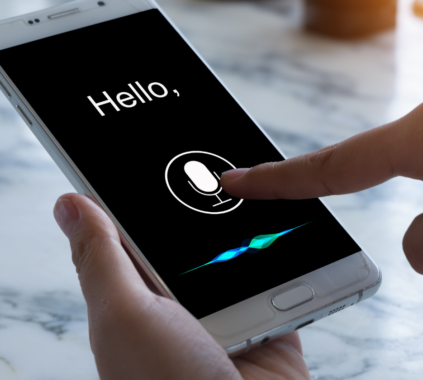Mobile apps for wearable technology are now essential in today’s technologically advanced society. Wearable technology, such as smartwatches and fitness trackers, has become a necessary component of our everyday lives and has improved the way we engage with technology. However, what does it take to develop mobile applications especially for these gadgets? How can developers and companies capitalize on this expanding trend? This post will explain what you need to know if you’ve ever wondered how to create a wearable app that works.
Wearable technology, such smartwatches, fitness trackers, and health monitors, has become a necessary component of our everyday lives in today’s quickly evolving electronic environment. By providing real-time data, improved connection, and personalized experiences at the push of a button, these gadgets—which range from the Apple Watch to the Fitbit to continuous glucose monitors—are completely changing the way we interact with technology. However, mobile applications are what really unleash the promise of wearables, even as their technology keeps improving.
Whether you’re a developer looking for tips or a business owner hoping to dive into wearable tech, this guide will give you a comprehensive overview of the process of creating mobile apps for wearable devices, including best practices, challenges, and trends. Plus, if you’re searching for a reliable partner, we’ll also highlight why choosing the Top mobile app development company in USA can make all the difference.
Do you want to visit Haridwar? travel agents in Haridwar is the right place to plan your tour. You can book your tour from here.
This post will give you all the information you need to develop wearable apps, whether you’re wondering what it takes to make an app for a wearable or how businesses and developers may capitalize on this growing market. We’ll go over the significance of wearable technology, important factors to take into account when developing apps, and trends influencing this industry going forward. We’ll also go over why working with a leading US mobile app development business could have a big impact.
Overview of Wearable Technology
Small, light gadgets made to be worn on the body are known as wearables. Consider smartwatches like the Apple Watch, activity trackers like Fitbit, or even continuous glucose monitors for health monitoring. These gadgets offer convenience, connectivity, and real-time information at a glance by gathering data, sending notifications, and integrating easily with your smartphone.
Wearable technology is developing beyond simply measuring steps and reporting the time. Wearable technology of today allows us to control smart home appliances, stay connected while on the go, and keep an eye on our health. Apps for mobile devices can help with that. These applications serve as a link between users and wearable functions.
Do you want to visit char dham? char dham tour operator is the right place to plan you Char Dham tour. You can book you tour from here.
The Significance of Wearable Mobile Apps
The foundation of wearable technology is mobile apps. The possibilities of wearables would be restricted in the absence of a compatible app. For example, a fitness tracker might gather information about heart rate, steps, and sleep habits, but the app is what interprets and displays this data in a useful manner.
Additionally, wearable apps give customers the ability to personalize their devices, connect them to other devices, and obtain real-time updates. It is impossible to overestimate the usefulness of these apps, whether they are used for tracking exercises or receiving notifications.
Wearable Technology Types and Applications
Every wearable has a distinct purpose and comes in a variety of sizes and shapes.
Smartwatches:
gadgets with functions like fitness monitoring, notifications, and even mobile payments, such as the Samsung Galaxy Watch and Apple Watch.
Fitness trackers:
such as those made by Fitbit and Garmin, are mostly used to monitor heart rate, exercise, steps taken, and sleep habits.
Smart Glasses:
Wearables such as Google Glass let users interact with their surroundings hands-free, provide information, and offer augmented reality experiences.
Do you want to visit Indiar? tour operator in India is the right place to plan your tour. You can book your tour from here.
Health monitoring devices:
Different app functionalities are needed for each type of device to provide a seamless user experience.
Important Things to Think About When Developing Wearable Apps
Making mobile apps for smartphones or tablets is not the same as making wearable apps. Apps for wearables must be portable, effective, and easy to use.
Performance:
Apps must be tuned for speed and performance because wearables are usually less powerful than smartphones.
Connectivity:
Since many wearables use Bluetooth to sync with smartphones, it’s imperative to have dependable connectivity and seamless data transfer.
Battery Life:
Due to their small size, wearables have a limited battery life. While maintaining a high level of functionality, a smart wearable app should use as little power as feasible.
User Experience (UX) in Apps for Wearable Technology
Outstanding user experience (UX) design is the foundation of any outstanding wearable application. The app needs to be quick to use, simple to navigate, and intuitive because wearables usually feature small screens and few input options (such as touch or gestures).
Simplicity:
To avoid clutter, the app should only provide the most crucial information.
Fast Interactions:
Wearers ought to be able to finish tasks with only a few gestures or taps.
Clear Notifications:
Since wearables are frequently utilized for updates while on the go, notifications need to be brief and easy to understand.
To guarantee that customers get the most out of their wearable technology, effective UX design is essential.
Creating for Small Screens
For app developers, the small screen size of wearable technology poses a special problem. Wearables necessitate careful consideration of content presentation and interaction design, in contrast to smartphones with bigger, high-resolution screens.
Minimalistic Design:
Put an emphasis on providing key information quickly.
Use readable fonts to make sure that even at small sizes, the content is readable.
Touch-Friendly Interface:
Ensure that controls and buttons are sufficiently large to allow for effortless tapping.
When it comes to wearables, customer pleasure is greatly impacted by good design.
Creating excellent, user-friendly wearable mobile apps has never been more crucial as wearable technology continues to influence how we live and work. Developers can make wearable apps that optimize these devices’ capabilities by taking into account elements like performance, connection, battery life, and user experience design. The secret to success is developing a wearable app with the proper functionality and design, regardless of your goals—tracking exercise, keeping an eye on your health, or improving everyday tasks.





